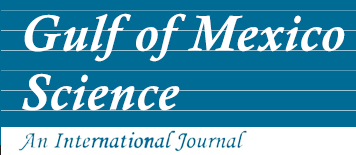Alternate Title
The Population Dynamics of the Brittlestar Ophioderma brevispinum in Near- and Farshore Seagrass Habitats of Port Saint Joseph Bay, Florida
Abstract
The population dynamics of the brittlestar Ophioderma brevispinum were followed monthly from Jan. 1995 to March 1996 in a near- and farshore seagrass bed in Saint Joseph Bay, FL. Abiotic (sea water temperature and salinity) and biotic (seagrass cover and sublethal predation) factors that could influence populations were also measured. Densities of individuals at both sites peaked in winter and spring, then declined dramatically in early summer months, and increased once again in the early fall at the offshore site and in the late fall at the nearshore site. Mean monthly disc diameters of individuals did not reveal any evidence of juvenile recruitment, suggesting seasonal migrations of adults into and out of near- and farshore seagrass beds. Seagrass cover at both sites varied substantially with season, with the highest cover in the summer months when brittlestar densities were lowest. Sublethal predation, as measured indirectly by counting the numbers of arm tips regenerating in individuals, did not differ significantly between sites except for the month of Feb. 1995, when levels of arm tip regeneration were higher among individuals at the nearshore site. The high overall incidence of individuals with regenerating arms at both sites suggests that predators exert persistent sublethal predatory pressure and may contribute to mortality. Individuals may migrate into deeper water during summer months to avoid thermal stress, hypoxia, or high levels of ultraviolet radiation and to avoid predation when predator densities are likely to be highest.
Recommended Citation
Leonard, C. L. and J. B. McClintock.
1999.
The Population Dynamics of the Brittlestar Ophioderma brevispinum in Near- and Farshore Seagrass Habitats of Port Saint Joseph Bay, Florida.
Gulf of Mexico Science
17
(2).
Retrieved from https://aquila.usm.edu/goms/vol17/iss2/3

